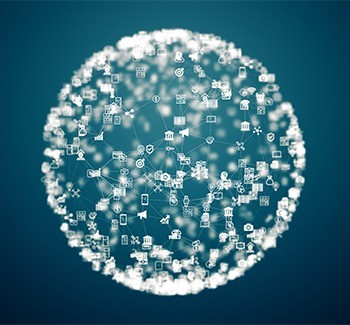By now you’ve probably heard about this thing called Industry 4.0 – a catchy name for the current trend of industrial automation and data exchange in manufacturing technologies. Industry 4.0 includes cloud computing, cognitive computing, Internet of Things (IoT) and something called cyber-physical systems (computers guiding physical machines). While this sounds like a lot of techie-talk, what you need to know about Industry 4.0 is that technology is getting more sophisticated and taking on new roles in manufacturing that required human operators not such a short time ago.
Industry 4.0 is making progress but we haven’t reached the finish line
A 2016 article published by Economist exploring the impact of Industry 4.0 technology on the workforce explained the capability quite succinctly: “Machines can already do many forms of routine manual labor and are now able to perform some routine cognitive tasks too.” Bill Lydon of the International Society of Automation expanded on this thought to explain the impact of the developments on manufacturing technology. “IoT is creating a world that is more connected, with the application of pervasive communications, economical sensors that enable powerful analytics, and predictive software.
While the capabilities of IoT and other Industry 4.0 technologies are real and the potential impact that Bill Lydon described is certainly taking place and can been seen in manufacturing operations around the world, we haven’t reached the finish line yet. There are still some significant challenges that must be overcome to fully recognize the value that Industry 4.0 technology – the greatest of these challenges is interoperability.
Good News and Bad News
The good news is that with the excitement in the industry around IoT, cloud computing, and other Industry 4.0 technologies, a lot of new products have been developed to cover a diverse set of business needs and scenarios. The bad news is that IoT devices and components from different vendors often don’t integrate well or easily, if they can be connected at all. This poses a problem for companies that want to leverage the features that these devices offer in their manufacturing operations and/or business processes.
Emerging Standards
The interoperability challenge is well known. A simple web search will bring up many articles published over the last couple of years on the topic. Numerous industry standards organizations have also taken up the challenge to develop interoperability standards. Traditional standards bodies like ANSI, IEC and ISO have sought to evolve existing manufacturing interoperability standards to support new technology trends. The International Society of Automation has taken on the Industrial IoT scenarios in earnest and The Open Group has sought to address IoT and Microservice interoperability as a part of their Open Platform 3.0 initiative.
What this means for companies
Until the standards for IoT and industrial automation mature, companies should expect to continue to encounter challenges bringing IoT devices and other Industry 4.0 technologies into their environment. The challenges will include both the initial integration task and providing service assurance for ongoing operations. Manufacturing process designers and operations staff will need to pay special attention to these challenges when working with Industry 4.0 technologies in their business environments. The individual features may be there today, but don’t underestimate the interoperability challenges.








